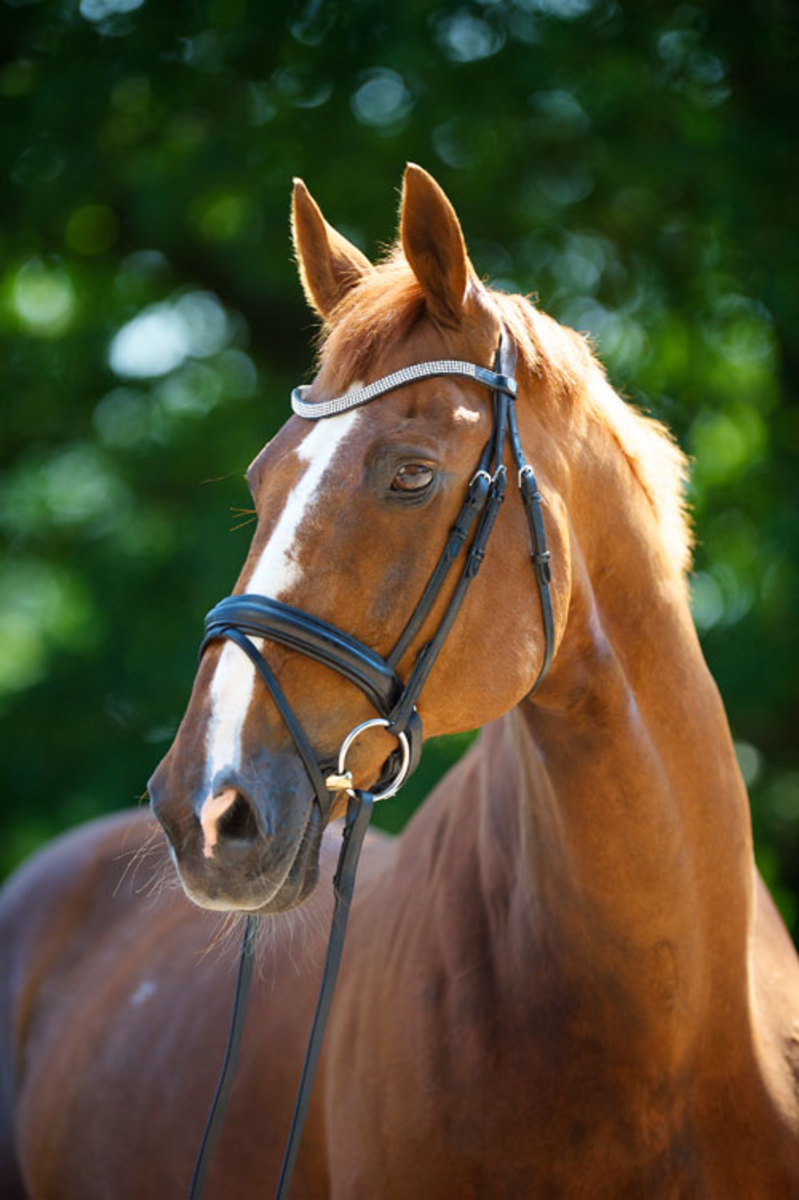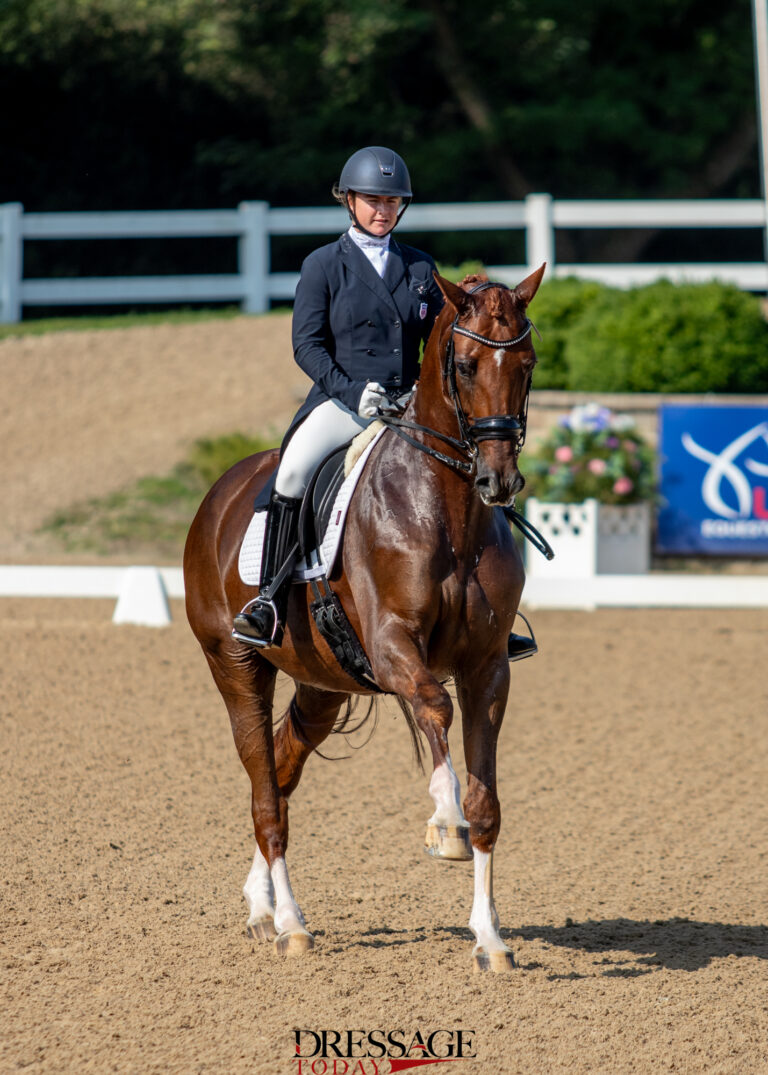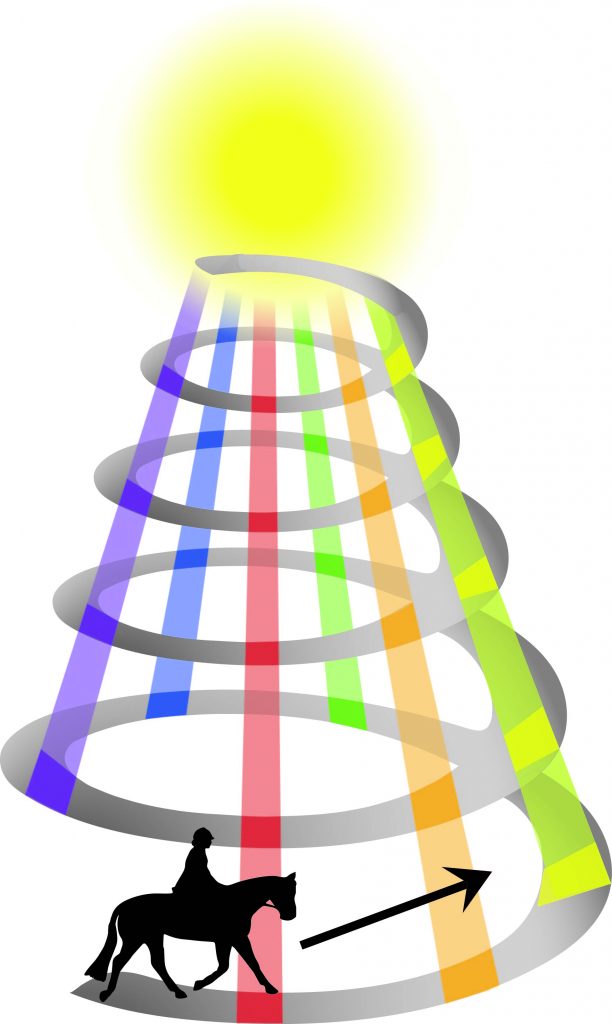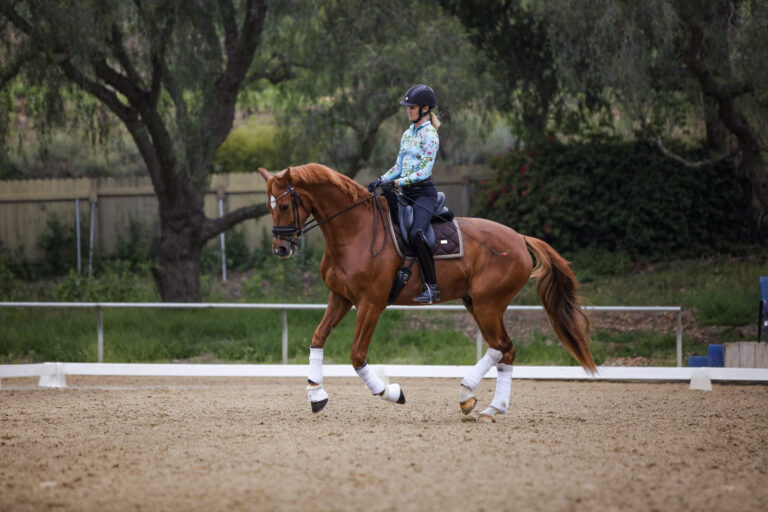Q: Is it possible to teach a 19-year-old horse the piaffe? I’ve started to ride a friend’s Thoroughbred–Quarter Horse cross, who used to be a hunter. He has excellent conformation, strong hindquarters and lots of talent for dressage. What is your experience with older horses learning new tricks? —Name withheld by request
A: During my career, I’ve had a lot of success teaching dressage to horses from other disciplines. The horse you describe sounds like a very good candidate for learning upper-level dressage, eventually piaffe. It is very important to have a healthy, cooperative animal to work with. If he is sensitive to the leg and a forward type, it will be a lot easier.

In principle, there is no reason any horse cannot learn piaffe. Success is going to depend on his understanding and acceptance of collection, which I sometimes describe as compressed impulsion and which should not be confused with slow. Be sure you are competent enough to give the driving and restraining aids in a way that gets a quick reaction from your horse without creating an overreaction to either and does not make him too nervous.
It is helpful to remember that piaffe is trotting in place. It can be done with increasing levels of power and agility. The more impulsion a horse has, the more expression he will present as the rider gathers that energy onto the spot. A very good piaffe is characterized by an engaged and compressed frame, highly flexed joints with lots of lift in the legs, lowered haunches and a calm acceptance of the bit. The rider is able to sit quietly and give very discreet aids.
The more energy a horse uses in the trot, the more active and brilliant the piaffe will be. On the other hand, a horse can understand the aids to shorten the steps of the trot but may not have a lot of energy going into or during the movement. Those horses will look dull, heavy and slow. I like to use the word “earthbound” for describing a piaffe without much collection. They may creep slowly into and out of the piaffe. Don’t forget that piaffe is the pinnacle of dressage and the basis for all the jumps and leaps of the haute école. If a horse tries to learn, I’m happy.
When teaching the horse to piaffe, we usually allow him to advance the steps rather than make him stay on the spot right away. That helps the horse understand the importance of the forward aspect of collection. You never want to use so much restraining aid that you block the horse from going forward. A horse’s conformation may make it really difficult to activate the haunches enough and lift the forehand enough to get a lot of elevation of the forehand. Only a few horses can do a truly brilliant piaffe, but many horses can do an acceptable piaffe.
Most hunters are not asked for collection. Even though they compress the joints of their hind legs when they rock back to jump a fence, it takes some months before they can start to sit and lift their forehand from the rider’s aids. Again, the more natural impulsion and energy your horse possesses, the easier your job will be and the quicker you will progress.
Your horse will benefit from fitness training, which should incorporate round (on-the-bit) forward trotting, cantering and transitions. Your goal will be to train your horse to shift his weight more toward the hindquarters and lighten his front end. I use the rein-back to help horses understand compressing the hind legs and carrying more weight on the haunches. On the ground or from the saddle, it is a very useful exercise. Going forward from the rein-back with little, short steps makes it much easier for the horse. I also cluck to get my horses moving quickly forward. With that response established, I start to use a short half-halt to retard the forward momentum. I alternate the two commands until I feel that the horse understands that he is supposed to take shorter and shorter trot steps.
Piaffe requires the horse to obey two conflicting commands: “go” and “don’t go.” Some horses pick up on it easily; others require more time and patience. If you or a person you know is good at groundwork, or work-in-hand as it is called, it can be a great help. A little tap on the leg at the right moment can help the horse understand how to keep the trot rhythm without moving forward so much.
One thing I can say for sure is that all the horses I’ve taught Grand Prix movements have had different learning curves; it doesn’t help to try to make it happen too fast. A few half steps every day is much better than 30 minutes of frustration once a week. They will almost all learn it, as I hope your horse will. Good luck!

Kamila Dupont received her USDF gold medal in 1984, participated in many U.S. Equestrian Team Championships and spent several years showing in Europe. She trains out of Pegasus Equestrian Center in Agoura, California.











